
This week for Flora and Fauna Friday, we’ve got a genus of wet-footed wetland shrubs, our Willows (Salix spp.).
Here in South Carolina we have four native species of Willow: Black Willow (S. nigra), Carolina Willow (S. caroliniana), Prairie Willow (S. humilis), and Silky Willow (S. sericea). Of those, Black Willow can be found statewide and Carolina Willow lives throughout the coastal plain. Prairie Willow is adapted to fire and found sporadically here in Longleaf Pine savanna ecosystems. Silky Willow is found in the Blue Ridge Mountains and its foothills. You’ll also see the ornamental Weeping Willow (S. babylonica), an exotic from China, planted around the State. For today, I’ll be focusing on Black Willow and Carolina Willow.
These two common Willow species share a variety of characteristics. Both grow on wet soils, all the way from damp to standing water. Both prefer full sun but can tolerate some shade. In growth form, they tend to be multi-stemmed shrubs, spreading outward into a spherical shape from ground to crown. These two species have leaves that are simple, finger sized and shaped, but with a long pointy tip. Both bloom in April to May with short spikes of goldish-green flowers. These mature into white tufts of windborne seeds which are blown far and wide with the aim to nestle along a damp pond bank. Willows also spread by their roots and through stem layering. They have pliable but fragile limbs, which break and propagate readily from cuttings, an adaptation for life on river banks where violent floods can rip a Willow apart and cast it downstream. Its weak wood allows the limbs to break away, protecting the roots and allowing the Willow to re-sprout. Simultaneously, the broken branches can root anew on a sandbar or logjam downstream.
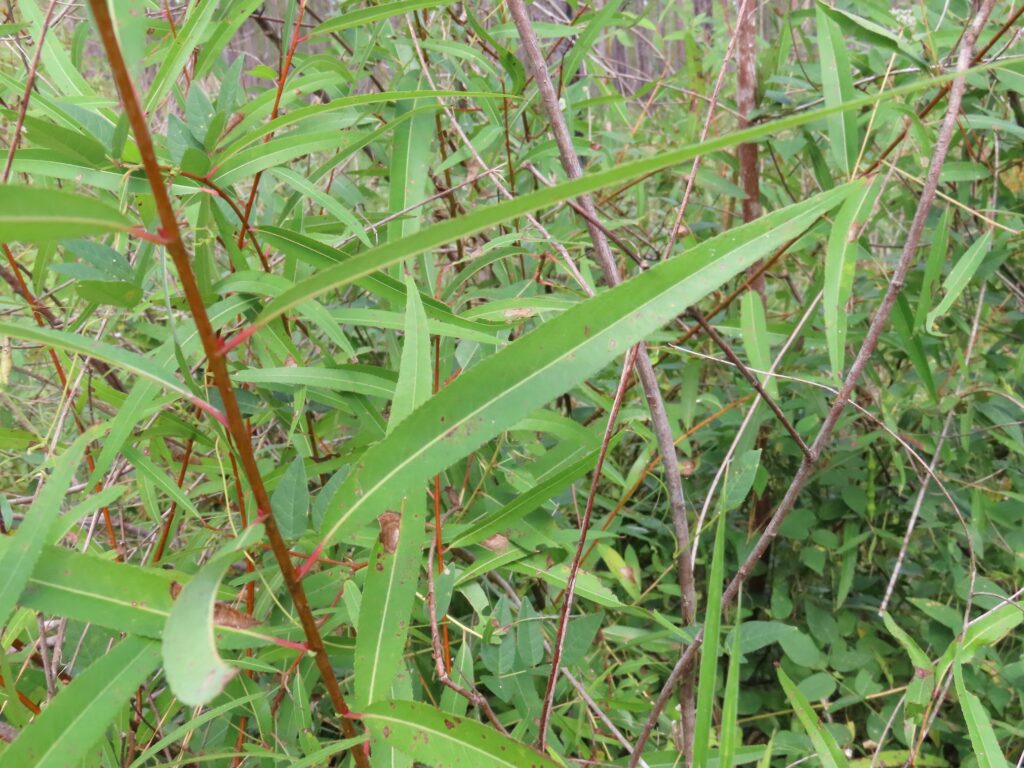
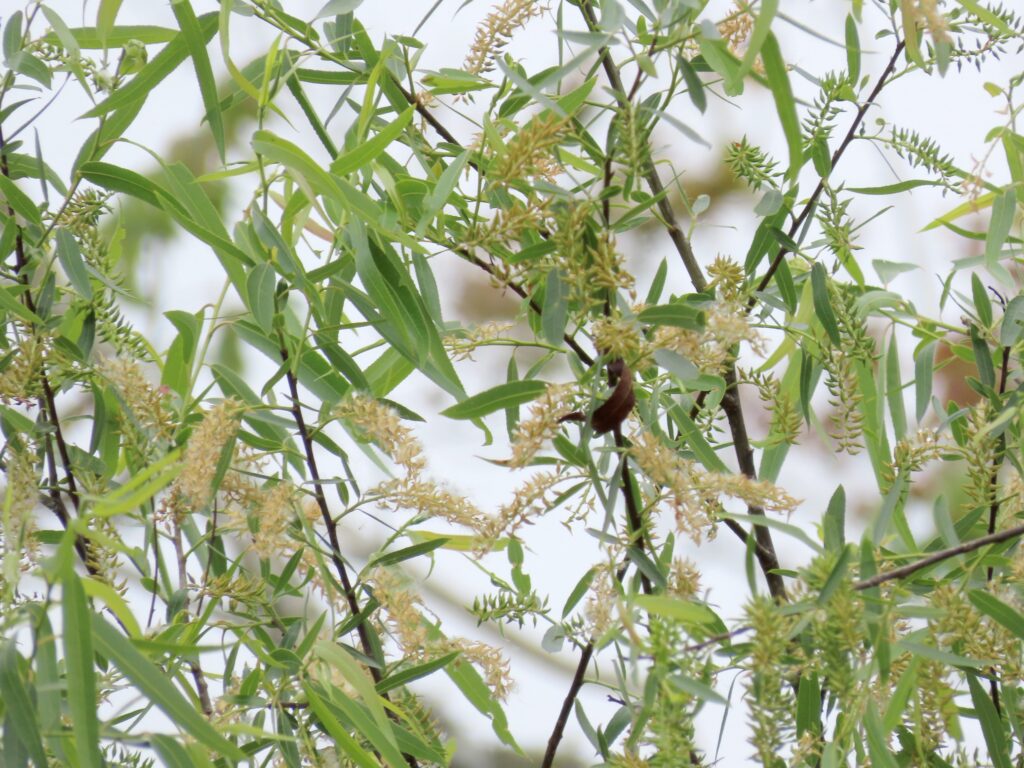
Black Willow is a highly adaptable species, growing in a plethora of soil types and into a myriad of shapes. Most commonly, it’s found growing along pond edges, stream banks, and in shallow, sunny wetlands. Normally it grows as a hedge of expanded shrubs but, in stable conditions, will grow up into a reasonably sized tree.
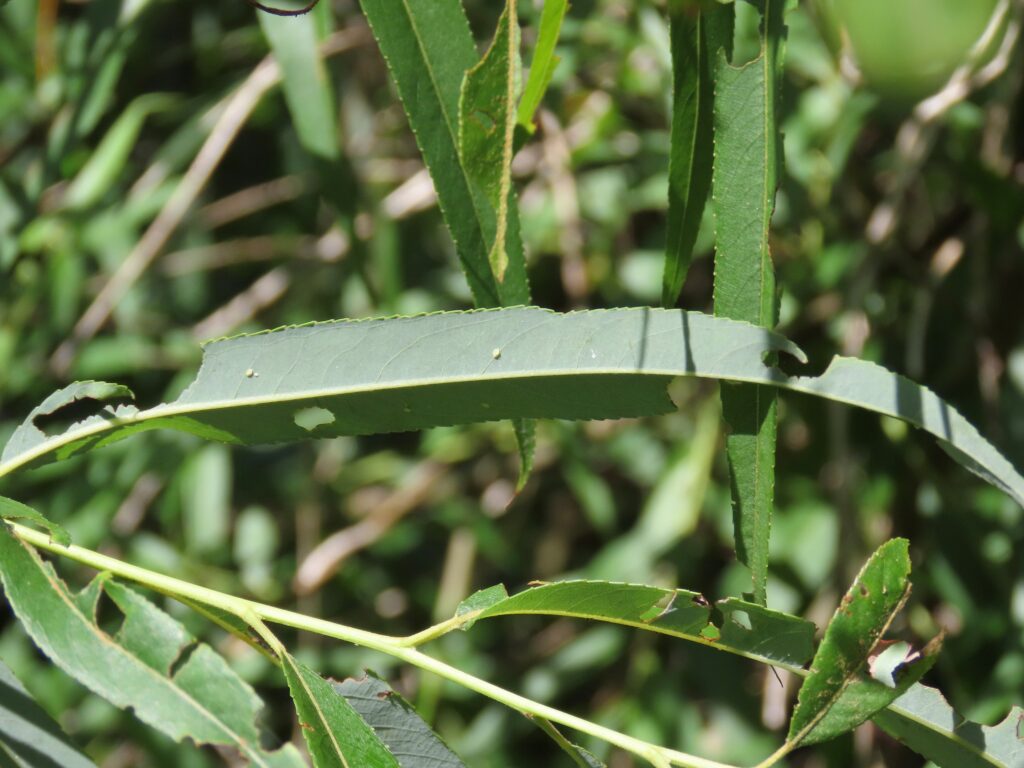
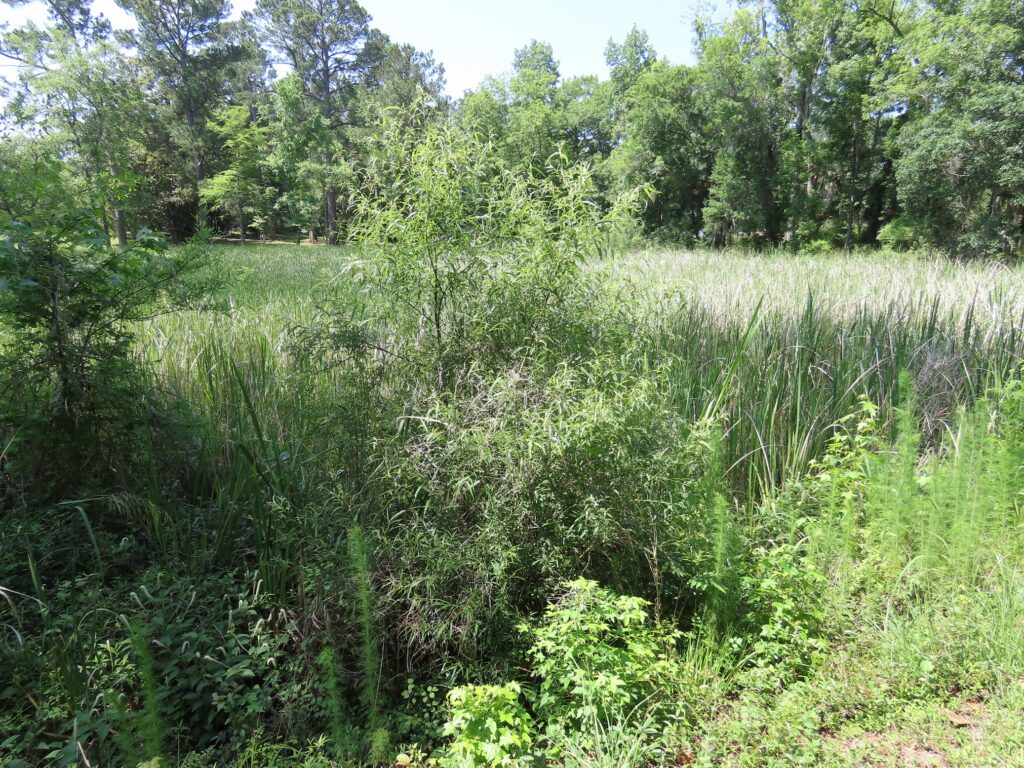
Carolina Willow is very similar in appearance to Black Willow but needs wetter soils to thrive. It also doesn’t really grow into a tree, staying as a large hedge or shrub. It’s found in similar wetland margin habitats but has more salt tolerance, and so is often found closer to the coast and in old tidal impoundments. The quickest way to tell these two species apart is by their leaves. Black Willow leaves look about the same on the top and bottom. Conversely, Carolina Willows have silvery-white undersides to their leaves.
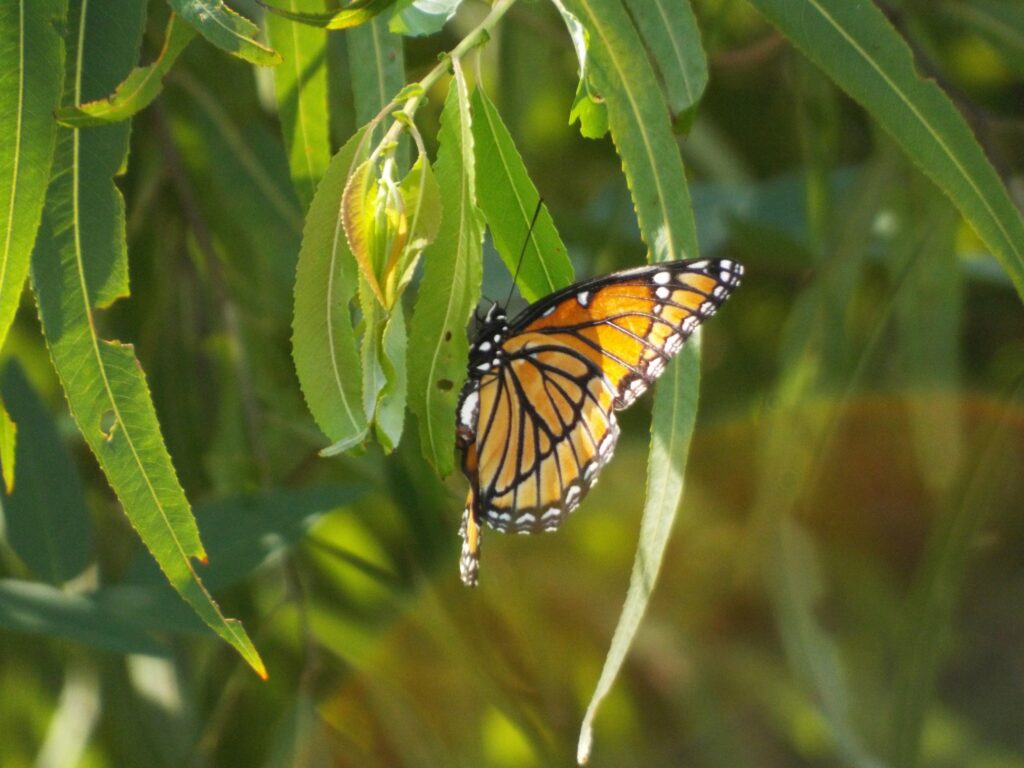

Willows have a lot of wildlife associations and provide ecosystem services. Their flowers are dual-pollinated, spreading pollen on the wind but also working with pollinators, specifically bees, trading pollen for transport. Willows are also the caterpillar host plant for three of our large, showy butterflies: the Eastern Tiger Swallowtail, the Viceroy, and the Red-Spotted Purple. The ecosystem services Willows provide make them a valuable asset in wetland systems. As a supple, spreading shrub that grows on wetland margins, Willows provide three key benefits to wetland ecosystems. They stabilize banks with their roots, they slow water and trap sediment in their labyrinth of stems, and they provide both shade to fish and structure to aquatic animals living beneath them. One final fun fact, the living tissue of Willows contains Salicylic Acid, which is used widely in indigenous medicines as a pain reliever and was isolated in the early 1800s to create the drug Aspirin.